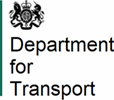
24 Aug 2021
Greener, longer goods vehicles could be rolled out from next year
- Longer lorries could be rolled out to cut emissions on Britain’s roads as early as next year, as Government continues to build back better and greener
- News follows nine-year trial and public consultation which found longer freight is safer, more economical and better for the environment
- Government will also launch trial of heavier, 48 tonne freight to help shift more cargo from road-only journeys onto rail
Greener, longer goods vehicles could become a permanent fixture on Britain’s roads as early as next year, the Government has announced.
This comes as the Department for Transport today publishes its response to its consultation on the introduction of longer-semi trailers (LSTs), for which the majority of respondents were in favour of their use.
It follows a nine-year trial of the vehicles - which can be up to 15.65m in length - that found them to be safer, more economical and better for the environment.
It’s estimated LSTs could remove up to 1 in 8 freight journeys by carrying the same amount of cargo in fewer lorries. This would support the Government’s Transport Decarbonisation Plan by reducing mileage, congestion and carbon emissions.
Following the successful trial and consultation, the Department for Transport will now consider the use of LSTs on Britain’s roads outside trial conditions, and the environment-boosting vehicles could be rolled out sometime in 2022.
The announcement about steps to reduce the impact of the haulage sector on the environment comes as the UK prepares to host COP26 this November - the 26th UN Climate Change Conference.
Transport Secretary Grant Shapps said:
“This Government is committed to fighting climate change and decarbonising our transport network, and we are working at pace to achieve net zero by 2050.
“Today's announcement is a vital step forwards as we work to introduce more environmentally friendly freight to our roads and build back greener.”
Some 57% of those surveyed in the Government consultation felt LSTs should be in general circulation and could see the positive effects the move would have on both the road haulage industry and Britain’s efforts to lead the fight against climate change.
The nine-year trial saw a reduction in the number of lorries making journeys across the country, with an average 8% reduction in miles covered by freight, as well as a 6.2% reduction in pollutants expelled. It also found the use of LSTs reduced the number of road traffic collisions, resulting from fewer journeys being made.
Road safety continues to be of paramount concern, and while the trial showed the use of LSTs caused fewer collisions, additional mitigations are under review to ensure hauliers and road users are kept even safer still.
The Government will also soon launch a separate trial using heavier-than-normal, 48-tonne lorries, following a positive response from the consultation on their introduction. These lorries will be able to transport heavier containers directly to and from rail depots so that goods can be transported across the country by train.
Currently, the maximum weight of a lorry (44 tonnes) makes it difficult to carry heavier goods to rail depots, meaning goods are dispersed between more lorries to be taken to their end destination by road. Taking more goods in heavier trucks to rail depots to be transported by train will help reduce congestion across the country and also slash emissions.
The trial would ensure these heavier lorries are only used on specific routes and would limit their use to a maximum journey length.
[ENDS]
Contact Information
Alex Collins
alex.collins@dft.gov.uk
Notes to editors
- For any media queries please contact the Department for Transport's Newsdesk on 0300 7777878.
Longer semi-trailers
- Longer semi-trailers, or LSTs, are a new type of heavy goods vehicle (HGV) trailer that have been on trial since 2012. The LSTs are up to 2.05 metres longer than the current standard semi-trailers on our roads (15.65 metres instead of 13.6 metres). These are not the mega trailers or road-trains permitted in some other countries.
- While the trailers are longer than existing HGV trailers, they cannot be heavier. The total weight of the trailer, the goods and the tractor unit must still be within the UK domestic weight limit of 44 tonnes. They must also pass the turning circle test applied to the existing 13.6m trailers. To achieve this, LSTs usually have a steering rear axle.
Heavier intermodal freight trial
- The standard maximum laden weight for six-axle articulated lorries when used on public roads in Great Britain is 44 tonnes. Some organisations have identified that allowing six-axle articulated lorries to be operated at 48 tonnes during domestic intermodal journeys would improve efficiency and support rail freight.
- Permitting these changes would be beneficial in reducing congestion and emissions, due to the removal of long distance road journeys by HGVs by shifting this freight onto rail.
- This increase in weight is intended to offset the heavier trailer and container needed for intermodal freight, thereby encouraging modal shift of freight from road to rail, with reductions in emissions and congestion.
